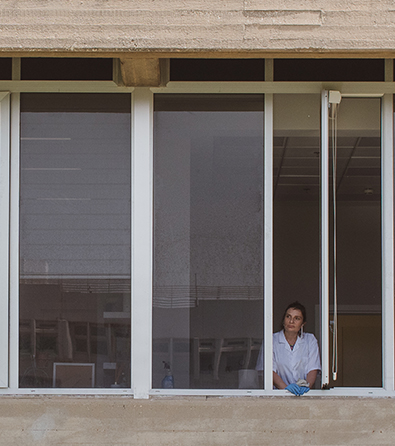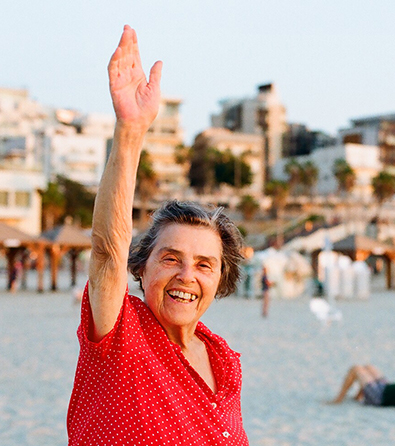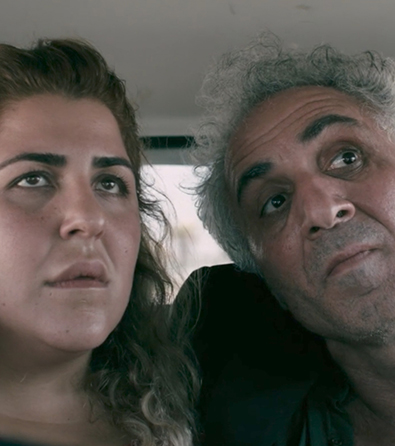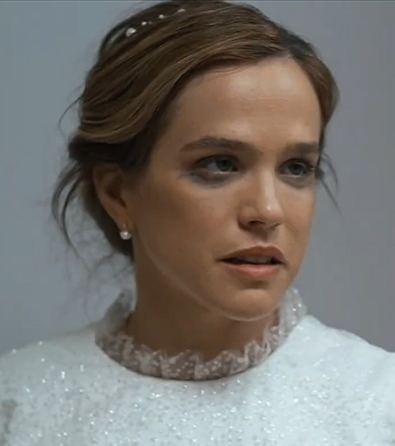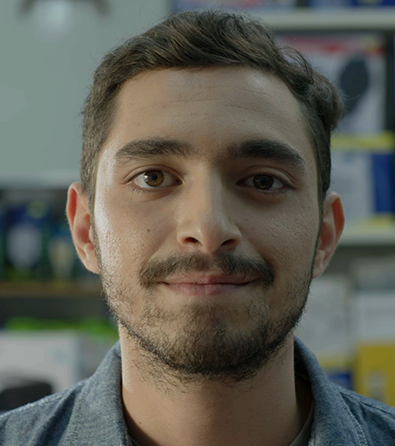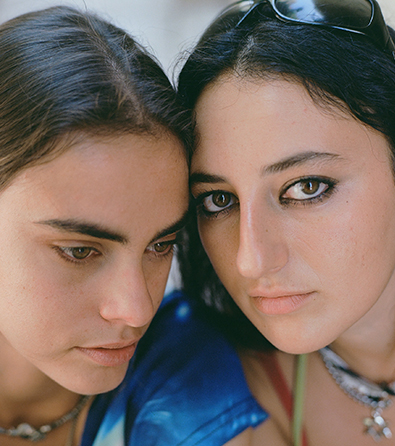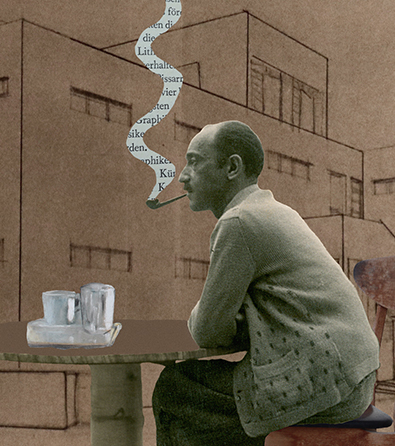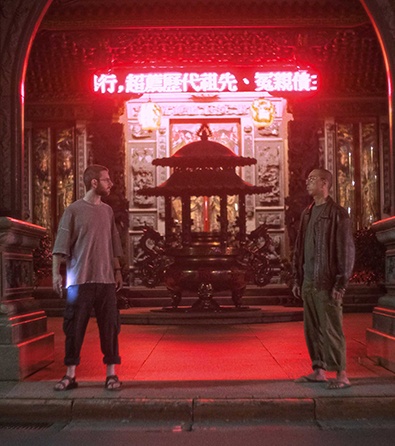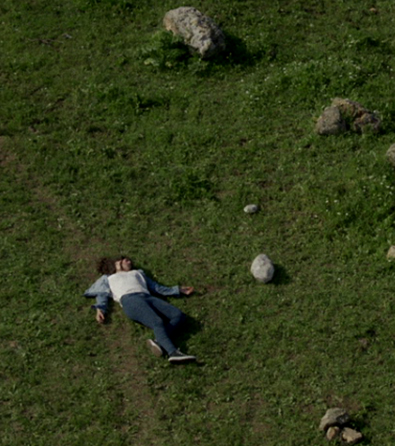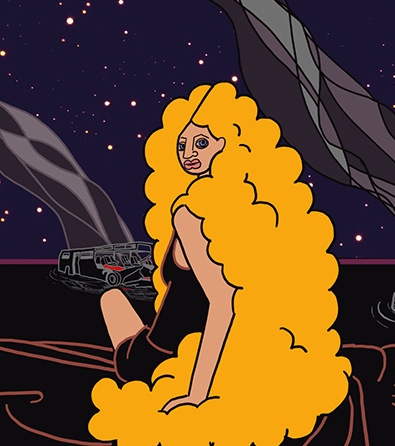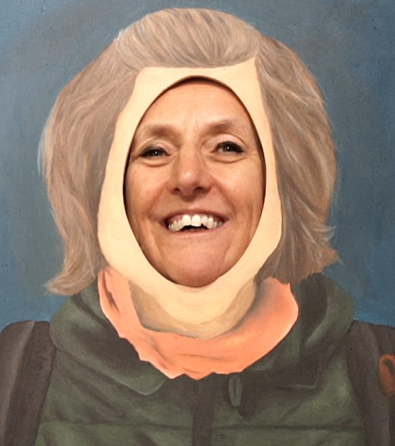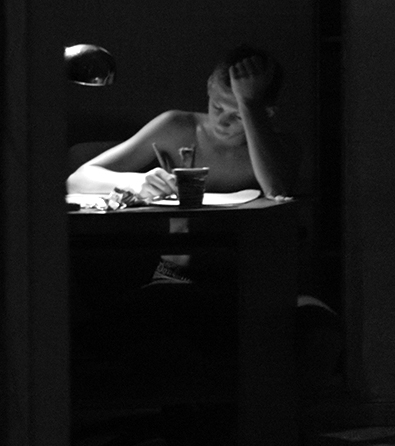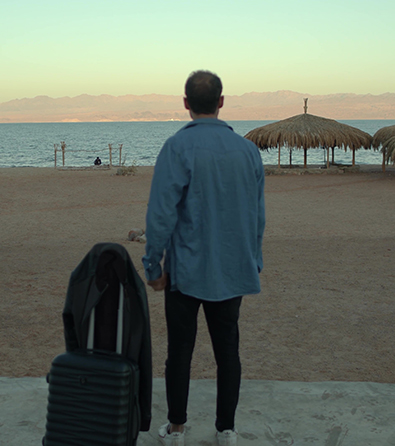Watch the short film The Last Dance of Arik and Ruth (3:30 minutes) at the top of the page.
* To watch this film, please approve YouTube/Vimeo cookies via the blue cookie icon at the bottom left of the screen
Ruth Perez was born with cerebral palsy and muscular dystrophy, confining her to a wheelchair. Her love for trance music, discovered at the age of five, inspired her father, Arik, to take her to Psytrance festivals both in Israel and around the world. Over the years, Arik and Ruth became an integral part of the Psytrance community, a group that welcomed them with love and compassion.
On October 7, 2023, Arik and Ruth arrived at the Nova Festival in Israel, near the Gaza Strip border, to celebrate life and music. Instead, they found themselves in the midst of the deadliest and most brutal terrorist attack in the country’s history. Approximately 4,400 people had gathered at the festival to dance in the desert over the weekend. In the early hours of Saturday, Hamas terrorists launched an attack, butchering 364 people and kidnapping 44 others to Gaza. Arik tried to escape with Ruth in his arms, but the terrorists brutally slaughtered them.
The touching story of Arik and Ruth was chosen by film director Doron Solomons to be told through a short animation film that combines artificial intelligence technology and filmed interviews. I spoke with Solomons about the process of working on the film and the choice of using AI as the main tool for creating the animation. Solomons shared that among the countless horrific images published in the media on October 7, “there was one image that stuck in my mind from the day of the massacre—an image of a wheelchair at the Nova site. I asked myself, what is a wheelchair doing at Nova? And when I realized who it belonged to, more questions arose about their story. How does a father take his disabled daughter to a Psytrance festival in the desert? Their story, even before October 7, is incredible to me. A disabled daughter whose father insists on taking her to Psytrance festivals from a very young age. Why does he insist on it? How does she manage there? Slowly, I realized that there is a story within a story within a story here.”
Despite facing a double loss, Solomons decided to approach Arik’s daughters, Ruth’s sisters, with the intention of having the family tell their story in the film, and they agreed. Solomons shared, “I chose the story of Ruth and Arik because I find it fascinating. I personally connect with it as a father who takes his children to performances and parties from a young age. Here is Arik, a father who takes his disabled daughter, against all odds, to places where her spirit thrives. It’s an amazing story to me. I think it also highlights the horror of the massacre. There are so many horrific stories from that day, but the Nova Festival, and the Psytrance community in general, are uniquely composed of peace-loving kind people. On that day, everything good in the world was butchered there. As a creator, I wanted to touch on the core of this evil in the story I tell.”
Since the beginning of the war, there has been a public debate in Israel about how to present the atrocities of October 7 to the world and what visual materials are appropriate to use. This massacre is the first in history to be extensively documented and shared live: the terrorists recorded their horrific acts with GoPro cameras and phones as they broke into homes in kibbutzim, towns, and military bases, broadcasting the horrific images and videos live on social media. They also uploaded photos of dead bodies to the victims’ social media accounts so their family and friends would witness their murder. Through these videos and photos, the terrorists attempted to humiliate and frighten Israelis hiding in bomb shelters due to continuous sirens, making them believe that the southern part of the country had been conquered by Hamas and witness the subsequent looting, murdering, mutilating, and raping by thousands of terrorists and Gazan civilians without interference for hours. On October 7, documentation became a tool in the psychological warfare Hamas waged against Israel.
Ultimately, the harrowing materials documented on October 7 are being used by Israel as evidence to expose the crimes against humanity committed by Hamas. The video known as the “film of horror,” which compiles 42 edited minutes from the footage recorded by the terrorists during the massacre, is presented by Israeli officials to diplomatic entities and journalists to showcase Hamas’s brutality and the crimes committed on that day. However, Israel refrains from indiscriminately distributing the film out of respect for the deceased and out of concern for the trauma it might cause to the general public.
How do you convey to the international community the story of the most horrific massacre of Jews since the Holocaust? How do creators handle such profoundly disturbing imagery? How do they make the world witness and acknowledge the crimes against humanity committed against Israelis without using the monstrous documentation by Hamas? So far, many attempts have been made through news channels, social media, and documentary films, such as using animation and presenting authentic but blurred videos and images. Israeli filmmakers are seeking creative ways to tell the stories of the massacre that occurred in Israel and to ensure that no one can deny that it indeed took place.
Alongside filming interviews with Ruth’s sisters, Arik’s daughters, Solomons approached Yuval Nitzan, a video editor and film creator who uses AI. Together, they embarked on a journey to create an authentic and engaging film that leverages AI’s learning capabilities to tell the remarkable story of Ruth and Arik to a broad online audience. “We chose AI over traditional animation due to time and budget constraints and to maintain the value of truth. Animation can distance the story from reality because it looks somewhat like fantasy. AI is a sophisticated tool that you feed with as much information as possible, teaching it along the way. The more information you provide, the more accurate and realistic the content it creates. We took as many family photos as possible and used them to build models tailored to Arik and Ruth Perez’s story. This is also why we chose to end the film with their original photo, so the audience would see them and understand that these were real people, not a fictional story.”
Solomons also notes the generous contribution of Infected Mushroom, who specially edited their musical piece “The Surgeon” for the film. Infected Mushroom is one of the world’s most successful groups in the field of psytrance and electronic music. The group consists of Erez Eisen and Amit Duvdevani.
Artificial intelligence in the film industry has made a meteoric leap, with tools that allow for the production of animated films more efficiently and creatively than ever before. Artists around the world fear that the evolving use of AI in the arts will render the artists themselves obsolete, but I don’t see it that way. Technology is advancing, and there’s no doubt that those who will replace creators who avoid its use are creators who know how to work with these tools, not the tools themselves. AI’s ability to process vast amounts of data and create content quickly is a significant advantage, but without the intervention of the creator, technology remains limited. The artist provides the machine with the idea, the context, and the unique vision, making the use of technology merely a powerful auxiliary tool. Looking to the future, the combination of technological capabilities with human creativity ensures that the boundaries of artistic creation will be expanded beyond imagination.
I asked Solomons about his experience working with AI on this project and his thoughts on the technology’s impact on creators. Solomons responded: “Using AI, or working in the digital world in general, expands the audience and enhances interaction with the creation. Many creators still don’t know how to use the internet effectively and creatively. If we don’t learn to use these tools, we won’t be where the audience is. Unfortunately, most people don’t visit museums and galleries. But that’s the reality. If we don’t recognize that there are other avenues to reach the audience, we’ll simply be left behind. The same goes for artificial intelligence—instead of fearing the loss of livelihood, let’s learn how to work with this tool. Today, anyone can do things that we never dreamed of in the past. There’s a larger toolbox, and we need to get used to it. It’s an amazing feeling to be able to create something as powerful as the film we made with minimal resources and in a short time, and still reach millions of viewers in Israel and around the world to tell Ruth and Arik’s story. It excites me.”
